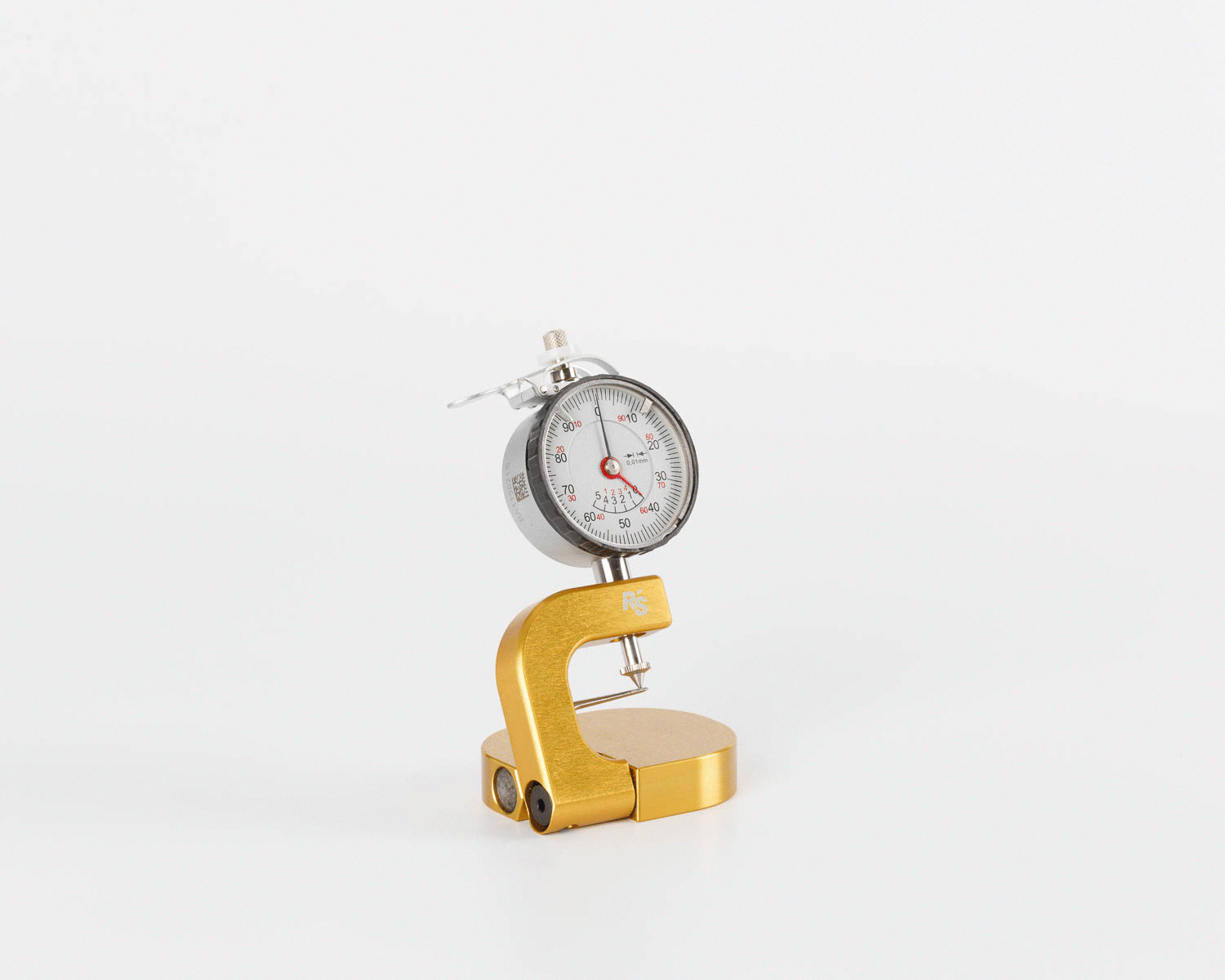
Practical and Portable

We have equipped the mini dial indicator (beloved for its light weight and small size) with practical tilting technology. This allows you to personalize the viewing angle of our dial indicator display. Simply move the tilting arm to the desired position. It even packs flat for storage and transportation.
With the engraved scale on the tongue you can align your reeds and thus carry out repeatable measurements to check both the profile and symmetry of the reeds and cane.
The dial and the lifting lever can be rotated to any desired position. This means that the dial indicator can be used with either the left or right hand.

The Tip of Your Choice
Choose among tips S (Standard for bassoon and the mini dial indicator), F, and D to see the point you are measuring from every perspective and to measure exactly at a given point. Choose the ball-pointed tip K for a smooth glide when you pull the cane or reed through, as well as to measure gouged cane.
How can I set the dial indicator to ZERO?
The easiest way is to turn the dial so that the large pointer is back at ZERO. However, the dial indicator can also be recalibrated so that the large pointer is back at 12 o'clock. To do this, loosen the fastening screw that fixes the dial indicator in the dial indicator arm. Now position the dial indicator by moving it up or down so that both the small and large pointer show ZERO. When locking the screw do not tighten it too much, as this can block the axle movement in the dial indicator.
Can I change the tip of the dial indicator?Replacing the tip of the dial indicator is easy to do. You can simply turn out the tip that you have now with the help of pliers and replace it with the desired new tip. If there is not enough space between the tongue and the tip, you can loosen the screw that fixes the dial gauge in the dial gauge arm and remove the dial gauge from the arm. It may now be necessary to recalibrate the dial indicator.
Can I change the tongue of the dial indicator?The tongue of the dial gauge can also be changed very easily. You can find instructions here.
Can the hardness tester be used as a dial indicator?The support plate of the hardness tester is too large to obtain precise results. The thickness of finished reeds, for example, cannot be measured with the hardness tester. Inaccurate measurement results may occur also with gouged cane. For this reasons we do not recommend using the hardness tester as a dial indicator.
Can I transform my dial indicator from right to left-handed or do I need to buy a new one?The dial indicator can easily be transformed from right to left-handed. Simply loosen the set screw at the end of the arm holding the dial. This will allow you to rotate the dial to face the opposite direction. Be sure to calibrate the height of the dial so it both touches the tongue and reads "0" before tightening the set screw. Make sure not over-tighten this screw as it will damage the actuating shaft and prevent the dial from operating properly.
- Tongue width at the tip
- 3 mm
- Weight
- 145 g
- Tongue Length
- 21.80 mm
- Note
- precision 1/100 mm
- Manufacturer
- Reeds 'n Stuff
Reeds ‘n Stuff produces reed making machines and a wide range of accessories for woodwind instruments. Founded in 1997 by Udo Heng in the beautiful Ore Mountains, the company has continued to develop ever since. Today, Reeds ‘n Stuff offers a wide range of useful, innovative and sustainable products that make reed making and the care of woodwind instruments easier.
Contact
Reeds 'n Stuff GmbH
Karlsbader Straße 88c
09465 Sehmatal-Cranzahl
Germany
info@reedsnstuff.com
with limited physical, sensory or mental abilities.
There is a risk of injury if used improperly.
This product is intended to be used indoors.
No review available for this product.
